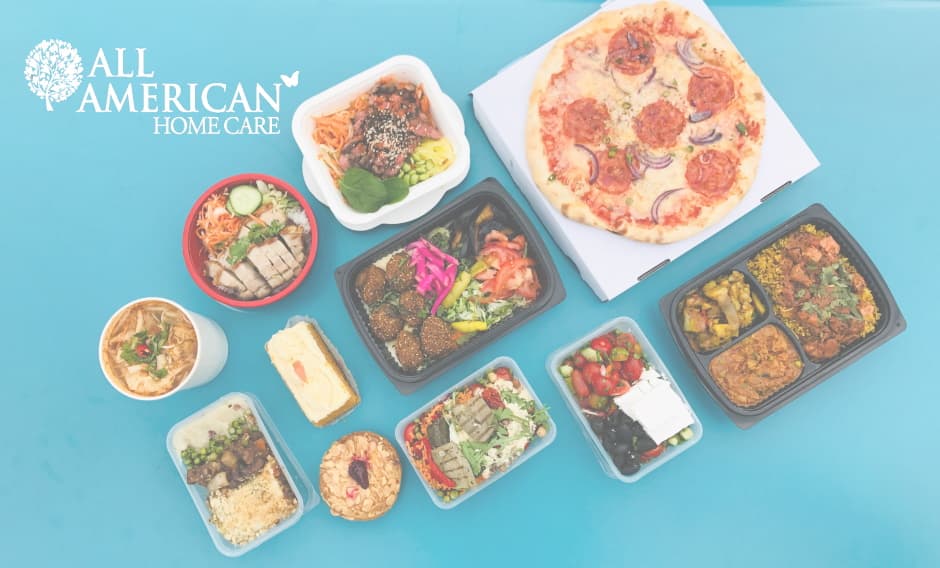
Diabetes-Friendly Grocery List
December 01 2020
- Diabetes-Friendly Grocery List
- Fruits and Vegetables
- Fruits
- Meat and Seafood
- Seafood
- Legumes and Grains
- Dairy and Dairy Alternatives
- Frozen and Canned Foods
- Oils, Dressings, and Spreads
- Snacks
- Desserts
- Foods and Drinks to Avoid with Diabetes
- Why Store-Bought Meals Aren’t the Best Option
- Why Optimizing Your Diet Is Important
- General Health Tips
- Final Thoughts
Diabetes-Friendly Grocery List
Patients with diabetes often find meal planning confusing and sometimes frustrating. You may feel your options are limited and even boring. Plus, following specific food guidelines is rarely an exciting venture.
But did you notice that in life, having a clear plan of action makes everything easier? This is why we’ve compiled detailed grocery lists for diabetics patients – to steer you in the right direction on your next food shop and make it effortless for you.
Fruits and Vegetables
By far, the best food for diabetic people is non-starchy vegetables. They won’t jack up blood sugar levels or cause weight gain. These are great choices for main meals and are also incredible snack foods, especially when combined with protein and fat sources.
Fill your grocery cart with these ingredients:
- Broccoli
- Cauliflower
- Brussels sprouts
- Green beans
- Eggplant
- Asparagus
- Celery
- Salad greens (arugula, kale, or romaine lettuce)
- Zucchini
Starchy vegetables have higher amounts of carbs and calories compared to non-starchy ones. But since they are rich in nutrients, antioxidants, and fiber, you should also include them in your diet. Buy these vegetables but remember to eat them in moderation:
- Green peas
- Corn
- Carrots
- Potatoes (white and sweet)
- Beets
- Parsnips
- Pumpkin
- Winter squash
- Yams
Fruits
It may sound counterintuitive since fruits are naturally sweet. But you shouldn’t be afraid of all sweet things. Fruits are high in fiber and serve as an excellent way to satisfy a sweet tooth. Don’t rely on fruits as a source of calories, though.
Here are our top picks:
- Berries
- Apples
- Oranges
- Bananas
- Watermelon
- Pears
- Avocado
- Tomatoes
Meat and Seafood
For someone with type 2 diabetes, the food list can include lean meat, which has no adverse effect on the condition. Some examples include:
- Poultry, including chicken, turkey, and cornish hen (without skin)
- Some beef cuts, such as sirloin, flank steak, tenderloin, and chipped beef
- Lean pork
- Veal, except for veal cutlets
- Wild game, such as venison and rabbit, and including pheasant, duck, and goose without skin
Medium-fat meat is allowed but suitable for consumption in moderation. Here are the products that fall into that category:
- Ground beef, chuck steak, and T-bone steak
- Pork chops, loin roast, and cutlets
- Lamb
- Veal cutlets
- Poultry with skin
- Liver, heart, kidney, and sweetbreads
Seafood
The American Heart Association already suggests eating at least two servings of seafood a week. But people with diabetes can gain even more benefits from it. Just make sure not to undo the perks by adding too much salt and oil, and you will have an impressively healthy meal.
Here is what to look for on the shelves:
- Salmon
- Tilapia
- Cod
- Shrimp
- Tuna
- Sardines
Legumes and Grains
Beans and legumes are excellent sources of protein and fiber. Not to mention, they are rich in vitamins, minerals, antioxidants. For diabetic patients, they are even considered superfoods.
Here is what you should add to your shopping cart:
- Kidney, pinto, navy, or black beans
- Barley
- Brown rice
- Buckwheat
- Quinoa
- Oats
- Bulgur
Dairy and Dairy Alternatives
Despite being technically high in carbs, dairy products are perfectly acceptable for diabetics — mainly due to them being a prime source of calcium and vitamin D.
These so-called “diabetes foods” are recommended by registered dietitians:
- Nonfat or low-fat milk
- Low-fat cottage cheese
- Unsweetened yogurt
- Low-sodium cheeses in moderation (mozzarella, Emmental, and Neufchatel)
Watch out for added sugars that are very common in foods you find at the supermarket. For example, flavored yogurts are known to have ridiculously high sugar amounts per serving. We suggest switching to plain yogurts (or with added fruits) and consider trying some non-dairy alternatives, such as products made with almond or soy.
Frozen and Canned Foods
An article on the study at Medical Daily mentions that nutrients in canned fruits and vegetables are well-preserved. They even make the claim that they are as nutritious as fresh foods. What’s more, some nutrients were even higher in canned items.
Another perk of buying canned and frozen foods is that they are usually cheaper. Having budget-friendly options makes it easier for regular people to maintain a healthy diet. Extended shelf-life- also helps.
The list of foods that good for diabetes management should include:
- Canned chickpeas, tomatoes, mushrooms, lentils, pumpkin, coconut milk, olives, etc.
- Frozen vegetables, fruits, and berries, meats, etc.
Pro tip: Rinsing and draining canned foods can help to reduce the sodium content by almost half.
Oils, Dressings, and Spreads
A common misconception is that meals for type 2 diabetics patients taste bland. If you’re someone who enjoys it, there is no issue. But for others, we want to point out that you don’t have to sacrifice flavor.
One of the most important things to consider when creating your diabetes-friendly grocery shopping list is to limit saturated fats. Here are a few healthier choices for oils, dressings, and spreads.
To limit saturated fats, we recommend the following items:
- Extra virgin olive oil
- Virgin coconut oil
- Raw butter
- Evening primrose oil
- Nut butters
- Fruit spreads (make sure to check the label for added sugars)
- Bean spreads
- Mustard
Snacks
Many people with diabetes find that eating smaller meals 4-6 times per day works better than the standard three large meals. The diabetic diet grocery list can include snacks, preferably those that aren’t processed. Snacks that are high in fiber, protein, and healthy fats will help keep your blood sugar levels under control:
- Almonds
- Beef sticks
- Cheese and whole-grain crackers
- Popcorn
- Chia seed pudding
- No-bake energy bites
- Trail mix
- Edamame
Desserts
Sweet desserts don’t seem like foods you can eat with diabetes. But as long as you choose no added sugar alternatives and keep your portion sizes small, it shouldn’t affect your blood sugar severely.
Here is what you can enjoy guilt-free:
- Fruit popsicles
- Dark chocolate
- Ice cream sweetened with Stevia
- Granola
Foods and Drinks to Avoid with Diabetes
Obviously, the list of foods for diabetics wouldn’t be complete if we didn’t mention what you shouldn’t eat.
Sugary beverages: These choices may lead to an increased risk of diabetes-related conditions like fatty liver disease. It can also cause increased insulin resistance and belly fat, lower metabolic rate, and worse heart health markers.
Trans fats: These are found in margarine, artificial peanut butter, spreads, creamers, and frozen dinners. It can also be added to other packaged foods to extend a product’s shelf life. Consumption of these products is associated with increased inflammation, insulin resistance, and belly fat.
Refined carbs: In this category, we have white rice, white pasta, white bread, white flour, and saltine crackers. These are more likely than whole grains to impact glucose levels. While not dangerous, over-indulging in these foods isn’t the best.
High-sodium foods: The American Heart Association warns about the “Salty Six”: bread and rolls, pizza, sandwiches, cold cuts and cured meats, soup, and burritos and tacos.
Alcohol: It can cause blood sugar to rise as well as decrease the blood sugar level, both to dangerous degrees. Excess consumption of alcohol may lead to disturbances in fat metabolism, nerve damage, and eye disease.
As you can see, good dietary choices aren’t only dependent on what we eat. We also need to know what not to eat with diabetes to avoid further complications.
For our final tip, we want to point out that cutting out certain foods may not be easy. Don’t stress too much about it or try eliminating all of them in one go.
The best diet is the one you can stick to long-term, and that doesn’t force you to suppress all your cravings. Gradually introduce better foods and try to find better alternatives to your favorite meals. These changes won’t happen overnight, but you need to remember that ultimately, you’re not doing it for the sole reason of restricting yourself – but for your own health.
Why Store-Bought Meals Aren’t the Best Option
People that design supermarket layouts don’t necessarily have your best interest in mind. About a third of the foods and drinks located in prominent areas of popular supermarkets are sugary. On top of that, dairy products, bread, and other essentials are often at the back of the supermarket. To get there, you need to walk through all displays.
Walking through all the aisles wouldn’t be such an issue if processed foods and pre-made meals weren’t so unhealthy. There are some brands, like Amy’s, Evol, or Kashi, that focus on using whole, natural ingredients. But if you look at the ingredients list and nutrition fact of most pre-made meals, you’ll be less willing to eat it.
Whenever you can, try to go for home-cooked meals. They are more likely to have more vegetables, lower sodium, and lower calories. Most times, you get more benefits for about half the cost.
Why Optimizing Your Diet Is Important
Getting the balance right in food is essential for anybody. For people with diabetes, specifically, nutritional needs have even more immense importance.
There is the question of how our blood sugar levels will respond to different diets. According to research, a proper diet helps manage blood sugar (glucose), weight, and heart disease risk factors, such as high blood pressure and high blood fats. What particular foods the medical professional recommend will be mentioned in our printable diabetic food list down below.
Here are some essential things to keep in mind:
- Certain foods can cause a sudden spike in blood sugar levels or raise cholesterol, both of which aren’t recommended.
- As a rule of thumb, fill half of your plate with non-starchy vegetables, a quarter of your plate with a protein, and the last quarter with a whole-grain item. Also, don’t be afraid of “good” fats.
- A diabetes-friendly diet is virtually the same as a healthy diet for anyone. Eat foods that nourish your body in reasonably sized portions and tailor it to your personal preferences and lifestyle.
- Don’t leave long gaps between meals. Not eating for more than 3 hours can be harmful to the body’s glucose levels.
- For a comprehensive diet plan, consult with a registered dietitian because while we can provide basic tips, your individual needs may require some adjustments.
General Health Tips
As you know, the risk of developing health problems like heart disease and kidney disease is greater for people with diabetes. But there are many ways that help minimize these risk factors. If followed diligently, patients can live long, fulfilling lives without being bothered by their condition.
If you want to make our recommendations even more useful, you can make lifestyle changes beyond just eating habits:
Check your blood sugar level at least twice a day. Keeping your blood glucose levels steady is very important. The earlier you notice irregularities, the earlier you can address it.
Keep moving. As per the CDC’s recommendation, you should be getting at least two-and-a-half hours of aerobic exercise every week. The best thing is you are free to decide what it will be – for example, as simple as walking.
Skip fad diets. Losing weight with Type 2 diabetes can have a positive effect on health. But it should be done gradually. Most diets promote strictly limiting a particular food group or eating patterns without much regard for the long-term results.
Catch some good sleep. Sleep deprivation makes the body weaker and more susceptible to developing health problems. Besides, many people tend to gain weight during periods of long-term exhaustion.
Manage stress. Excess stress can elevate blood sugar levels. Try to find a way to relieve stress and practice it at least once a day for 15 minutes. For example, sit quietly or journal.
Stop smoking if you do. Cigarette smoke can significantly damage the heart and blood vessels.
See your doctor regularly. Get a complete checkup at least once a year. Some people don’t feel the symptoms of complications for a long time or don’t even know when their health is deteriorating.
Final Thoughts
Establishing a healthy lifestyle and sticking to the diabetic grocery list are only some aspects of managing diabetes. Additionally, medications and monitoring of blood sugar levels become a part of life for people dealing with this condition.
But it doesn’t have to be hard. As long as you follow your doctor’s recommendations, you can keep everything under control. What can help you even more is professional medical and caregiving services from All American Home Care. Our team members are certified to provide the necessary guidance for a range of conditions and life situations, so you can always rely on us.





